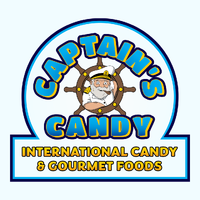I Luv Candi for Dummies
Table of ContentsMore About I Luv CandiI Luv Candi Fundamentals ExplainedAn Unbiased View of I Luv CandiI Luv Candi Can Be Fun For AnyoneSee This Report on I Luv Candi
You can likewise approximate your very own revenue by applying various presumptions with our economic plan for a candy store. Average monthly revenue: $2,000 This kind of sweet shop is often a tiny, family-run organization, probably recognized to residents however not drawing in multitudes of tourists or passersby. The store could supply an option of typical candies and a couple of homemade deals with.
The store does not typically lug unusual or expensive products, focusing instead on budget friendly treats in order to maintain regular sales. Presuming a typical spending of $5 per consumer and around 400 consumers each month, the regular monthly revenue for this sweet-shop would be around. Typical monthly profits: $20,000 This candy store take advantage of its strategic place in a busy city area, attracting a multitude of consumers trying to find sweet extravagances as they go shopping.

Along with its diverse sweet choice, this store may also market related items like gift baskets, sweet arrangements, and novelty things, supplying several revenue streams. The shop's location calls for a higher allocate rent and staffing however results in greater sales volume. With an approximated typical costs of $10 per consumer and regarding 2,000 customers monthly, this store might generate.
The Single Strategy To Use For I Luv Candi
Situated in a major city and vacationer location, it's a big facility, typically spread out over multiple floors and potentially component of a national or worldwide chain. The shop offers an immense variety of sweets, consisting of unique and limited-edition items, and merchandise like top quality garments and devices. It's not just a store; it's a destination.
The functional prices for this kind of store are substantial due to the location, size, staff, and includes supplied. Thinking a typical purchase of $20 per customer and around 2,500 customers per month, this flagship shop can achieve.
Category Examples of Costs Average Regular Monthly Cost (Range in $) Tips to Lower Expenditures Lease and Utilities Store rent, electrical power, water, gas $1,500 - $3,500 Think about a smaller area, discuss lease, and use energy-efficient lights and home appliances. Inventory Sweet, snacks, packaging products $2,000 - $5,000 Optimize stock management to lower waste and track prominent things to prevent overstocking.
Our I Luv Candi Statements
Marketing and Advertising and marketing Printed matter, on the internet advertisements, promotions $500 - $1,500 Concentrate on cost-effective digital advertising and marketing and utilize social networks systems totally free promo. Insurance Service responsibility insurance coverage $100 - $300 Look around for competitive insurance coverage prices and consider packing plans. Equipment and Upkeep Sales register, present shelves, check it out repair services $200 - $600 Buy used devices when feasible and perform regular maintenance to prolong equipment life expectancy.

This means that the candy store has reached a point where it covers all its taken care of costs and begins producing earnings, we call it the breakeven factor. Take into consideration an instance of a sweet shop where the monthly set prices typically amount to about $10,000. A rough quote for the breakeven point of a candy store, would certainly after that be about (given that it's the complete set expense to cover), or selling between with a rate array of $2 to $3.33 per device.
All About I Luv Candi
A large, well-located candy shop would certainly have a greater breakeven point than a little shop that doesn't require much revenue to cover their costs. Interested about the productivity of your candy store?
An additional threat is competitors from various other sweet-shop or bigger retailers who could offer a broader selection of products at lower rates (https://www.goodreads.com/user/show/176854025-carol-lunceford). Seasonal fluctuations in demand, like a decrease in sales after holidays, can also affect productivity. In addition, altering customer choices for much healthier snacks or dietary constraints can decrease the allure of standard sweets
Financial slumps that reduce customer costs can influence sweet shop sales and success, making it important for candy shops to manage their expenditures and adjust to transforming market conditions to remain lucrative. These threats are usually consisted of in the SWOT analysis for a candy store. Gross margins and net margins are vital signs made use of to determine the success of a sweet-shop business.
The Single Strategy To Use For I Luv Candi
Basically, it's the revenue remaining after subtracting expenses directly related to the sweet stock, such as purchase prices from vendors, production prices (if the sweets are homemade), and staff wages for those included in production or sales. https://www.find-us-here.com/businesses/I-Luv-Candi-Mooloolaba-Queensland-Australia/34028613/. Net margin, conversely, elements in all the expenses the sweet-shop incurs, including indirect costs like management costs, advertising, lease, and taxes
Sweet-shop usually have an ordinary gross margin.For circumstances, if your sweet-shop gains $15,000 monthly, your gross revenue would be about 60% x $15,000 = $9,000. Allow's show this with an example. Take into consideration a sweet store that sold 1,000 sweet bars, with each bar valued at $2, making the total revenue $2,000 - camel balls candy. Nonetheless, the store incurs prices such as acquiring the candies, energies, and incomes to buy personnel.